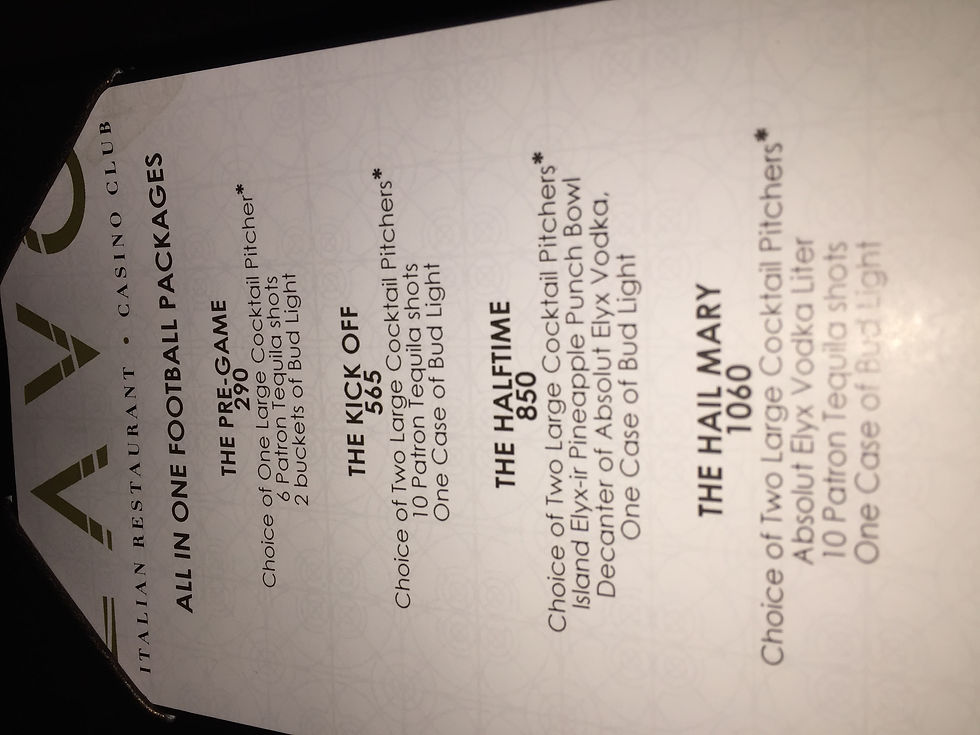Seeking the "Millennial" Grail, a Fool's Quest?
- Kara Holm
- Oct 16, 2015
- 6 min read
I am not saying anything original when I note that the most successful businesses understand who their customers are and what they want. In fact, their products and services are designed to appeal to a well-defined type of person. Defining customers and understanding their hopes and dreams is (typically) more easily achieved by a small business with a focused product or experience, although there are examples of larger firms doing this effectively when they have a clearly understood brand positioning and strong visionary leadership (think Apple).
Consider Fluevog as an example of a small company that understands the people who choose its products and is clear about what it wants to offer. For the uninitiated, Fluevog is a line of Canadian-designed shoes, made in small batches with attention to quality. The company’s positioning statement is: “Unique Soles for Unique Souls”. Fluevog features edgy and distinctive styling, so they are not for everyone. Within the Fluevog line they offer a variety of styles that appeal to people who may not dress alike but share a sense of self that is just outside of the mainstream. As you might expect, you cannot buy Fluevogs just anywhere, which helps you feel like a "one off" wearing your "Vogs".

Fluevog has legions of loyal fans like me, people who own multiple pairs of shoes and boots from the firm (I have three pairs of Pearl Harts in different colours, just sayin’). The customer service is excellent and, for a small fee, they will repair their shoes to ensure you have your special shoes for a very long time. The company’s customers are men and women (and people who don’t identify in the traditional binary manner), they are young and old and every age in between. We come from all walks of life and professions (providing you can manage the price point, which is reasonable given the quality, in my opinion). I have noticed that Fluevog wearers acknowledge one another on the street, knowing that on some level we share an underlying belief about ourselves. (Fun fact: AirCanada Rouge chose Fluevogs as the official uniform shoe for their cabin crew.)

Fluevog has thrived for 45 years now because the firm has a clear vision of its customers and itself, thanks to its visionary leader. Owner John Fluevog, with his team, has committed to his vision and always executes on his promise of quality, original shoes. Significantly because they understand the underlying decision-points for the customers, Fluevog is able to set the correct price point and align that with the design and production. The most important differentiator for Fluevog is that their vision of the customer is based not on age, stage of life or geography: it is based on their values and attitudes, i.e. their psychographic profile. Which is a slightly inelegant segue to the topic I really wanted to discuss today: the obsession with marketing to Millennials.
During the Global Gaming Expo (G2E) in Las Vegas, which wrapped up October 1, I attended countless sessions that involved hand-wringing about the difficulties engaging Millennials with the bricks and mortar casino experience. One person said: “They walk right past the slot floor on the way to the night club!”. My understanding from colleagues who have attended G2E in the past is that this has been a common theme at the conference for a number of years. I was left wondering why more business and thought leaders were not talking about the psychographic profiles of highly social people who like to game and take smart risks, rather than talking about Millennials as a homogenous group, which they are not.
Years ago I was very interested in the work being done by Canadian demographer Michael Adams (author of Sex in Snow and Fire & Ice) at Environics. Environics offered a ":social values" quiz online to support the book Sex in the Snow. Respondents would answer some interesting and thoughtful questions to help determine their values. After completing the quiz, respondents would be told which “tribe” in their generational cohort they most closely resembled. The part I really liked came at the end where my position would be shown on a grid where I could also see where other “tribes” in my cohort were situated, as well as the placement of different generations’ tribes. (The quiz is still available but not the intergenerational comparative grid.) What I found most interesting was that there were groups within each generational group that shared similar values; while migration was visible, there was continuity. This model suggested that I have more in common with Baby Boomers or Millennials who were closer to my position on the grid than other members of Generation X.
With this in mind, the challenge for the gaming industry – and others sectors for that matter – is to figure out which of these Millennials are its future customers and develop products and experiences for them. Understanding the psychographic profiles of the various members of the generation will help businesses be more focused and successful.

On my last night in Vegas, Helen, Nic, Jayne and I went to the “Official” G2E Cocktail party at Lavo Casino Club in the Palazzo. Lavo is an established restaurant and nightclub. Recently, a decision was made to attempt to introduce Millennials to casino gaming by putting table games in the nightclub setting. Essentially Lavo Casino Club tries to marry the established bricks and mortar casino concept with a successful nightclub, creating some type of merged experience.
We walked up the stairs, through an interesting hallway that felt Roman and Turkish all at once and into a dark, loud and dimly lit room. Once I had a chance to adjust to the lighting I took a look around. Personally I love the aesthetic of the upstairs space at Lavo. It has a steam punk meets pop art vibe with its library visuals and stunning red chandelier. Even though I loved the look of the room, after walking around, getting a drink and visiting the gaming tables I knew I would never return. It was not clear to me, after an hour, who the the customer would be for a space of this type.
Lavo's positioning statement or tagline is: "Black Jack, Craps, Nightlife, Sunday Football." Truthfully that seemed like a lot of complicated and unrelated pieces tied together in a weird mash-up that did not deliver any one of the experiences individually, and certainly failed to deliver the integrated experience the creators imagined. The operators added blackjack and craps in the back part of the nightclub. The gaming table layout is inefficient from a labour point of view and does not create a cluster of activity. Players have their backs to one another, rather than being in a traditional pit configuration, which is more social. The front part of the Club features a bar, and tables (for those ordering bottle service). The low gaming table limits do not align with the premium pricing on bottle and food service. The people attracted to Lavo, because of the "VIP Bottle Service" and associated pricing on food and beverage, would be people who see themselves as living large, they are hedonistic and status seeking (not that there’s anything wrong with that!). Based on my experience, without the benefit of seeing their market research, I believe that people who want $10 bet minimums do not fit into this category. In addition to the nightlife experience, Lavo also promotes a football experience, offering high-priced packages (starting at $290) to watch the "big game" on Sundays.

It must be obvious that Lavo Casino Club is not being focused enough. Through its offering Lavo does not demonstrate an understanding of who its customers are and what they want: it is trying to address several business challenges at the same time and is therefore not addressing any one of those issues or opportunities adequately. I applaud the Sands Corporation for at least trying to address a business issue that is a real risk in the future. I just wish they had stepped outside of established paradigms to create their solution.
Businesses must know their customers. How old they are and where they live is a consideration, as are their behaviours, but what is more important is understanding how they see themselves and what they want. People are not defined by their generation, they are defined by their values and beliefs. Businesses must also must know themselves. This self-knowledge within businesses must proceed the knowledge of the customer. Having a clear understanding of who you are, how your product, service or experience will be differentiated, combined with an understanding of who wants this product or service, is the key to success. Without that, trying to build your business is truly a fool’s quest…..






Comments